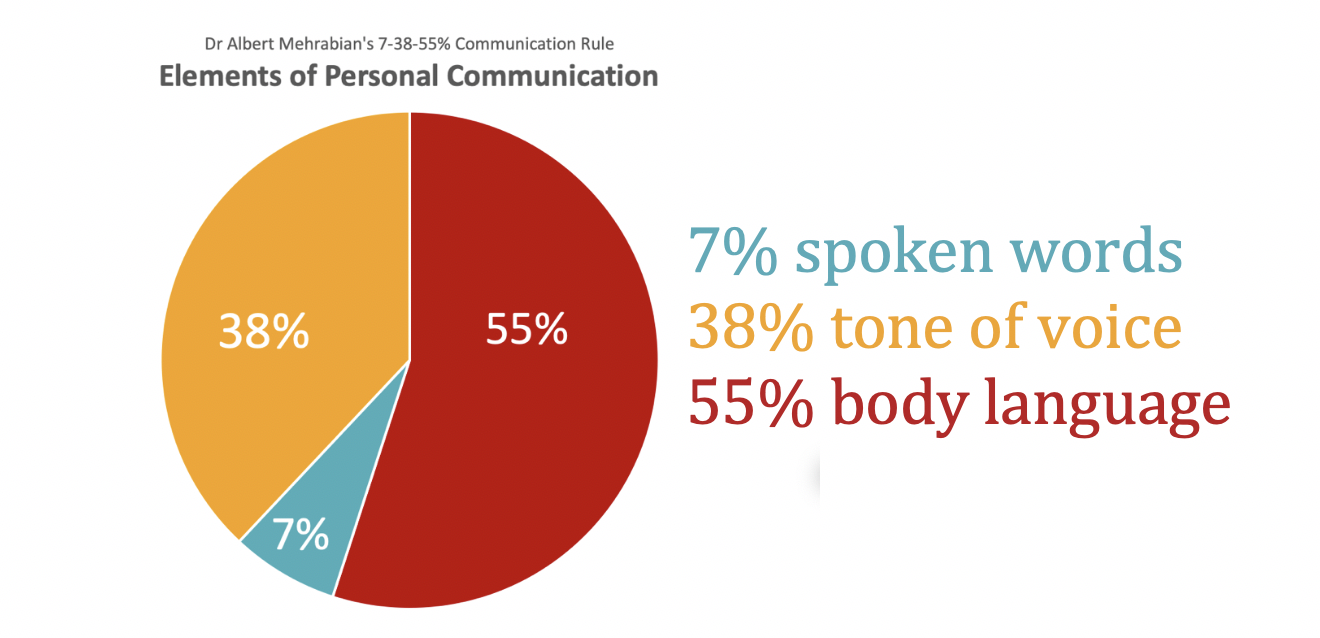Research suggests non-verbal signals have more impact than the spoken word. And if your verbal and non-verbal communication is out of sync, you may lose the trust of those around you!
By Laura Handley, Change Lead at RedWizard
Trust is such an important aspect of business change and transformation. And to gain trust, a business needs a powerful story and a purpose-led mission. Only then will their people feel they belong and are part of something bigger. But communicating the business narrative can be extremely challenging. Getting the right messages across, in the right way, requires clear, consistent and meaningful communications—it can be the difference between success and failure!
But let’s be honest, most business change comms do not land well, they lie unopened in inboxes or are skim-read because the of the head-spinning demands of the 21stCentury workplace. And as change professionals, I believe we’ve a responsibility to look for new and improved ways to communicate change. We need to work towards inspiring and empowering individuals. We need to build trust! Because in the absence of trust, fear, anger and anxiety rule–especially during times of uncertainty.
So, how can we improve the way we communicate change in order to create a culture of trust? By developing our emotional intelligence (EQ)–understanding how to manage emotions when dealing with stress, communicating effectively, empathising with others, defusing conflicts and overcoming challenges. And at the very core of EQ is communication—verbal and non-verbal. Which is more important? Does non-verbal communication have more impact? If so, how can we make the most of it?
How important is non-verbal communication? And does it help to build trust?
A friend of mine is terrified of flying. She told me when things get bumpy, she looks to the cabin crew to see if they’re showing signs of fear. She also listens for signs of tension in the pilot’s voice when he announces turbulence ahead. So, when she’s fearful, she looks for stability in those who are in control—she wants a sign that the trust she has placed in the pilot will keep her, and everyone else, safe.
But…
What my friend didn’t mention is feeling better after hearing what the pilot actually said. What struck me most was her intense focus on the sound and tone of the pilot’s voice, and the facial cues and body language of the cabin crew. In fact, when I questioned her, she said…
“The pilot said what I expected regarding the turbulence. But I’d know if something was wrong by the tone of his voice!”
This got me thinking. Does a person’s tone and body language trump other forms of communication when it comes to developing trust? It turns out, there’s a lot of research that supports this view.
Mehrabian’s communication model: 7—38—55
Professor of psychology Albert Mehrabian studied the importance ofnon-verbal communications in the 1970s. Through his research, he discovered that the use of non-verbal communication was stronger than first assumed. For this reason, he formulated the 7-38-55% communication rule which is still widely used today.

It appears that people don’t put much trust in words alone—only 7%. But, when it comes to non-verbal communication, it’s a whopping 93%!
“The non-verbal elements are particularly important for communicating feelings and attitude, especially when they are incongruent: if words and body language disagree, one tends to believe the body language.”
–Albert Mehrabian, Professor of Psychology at the University of California, Los Angeles
How can we maximise the power of non-verbal communication?
Perhaps we can develop a business change communications strategy that places more emphasis on non-verbal modes of communication. And maybe, just maybe, this approach will help us as business change professionals, ensure people feel safe when things get bumpy? And if we place more emphasis on helping senior management (or those ‘in control’) deliver change communications with more awareness of their tone of voice, and any negative non-verbal signals they may be sending inadvertently, it will have a positive impact on how people feel—making them feel safe, rather than fearful, angry or full of anxiety.
“If our non-verbal communication is not aligned with our spoken words, then our message will be mixed or muddled, and it will not resonate at all. Our message will be lost in translation.”
–Forbes 2019
Awareness is the first step. If we take time to truly understand the impact of non-verbal communication, we can ensure it’s taken into consideration during the initial planning of any business change or transformation project or programme.
I believe we can maximize the power of non-verbal communication by ensuring those business functions and leaders responsible, or involved, with delivering change are trained on the importance of non-verbal communication. This includes all those areas that impact people—from change and project management to corporate communications and HR.
How can a PMO help achieve this?
I’m not suggesting the PMO take full responsibility. At the end of the day, all those involved with delivering change are responsible! But because of their neutral status, being outside of the necessary change and not directly impacted by it, the PMO can take a step back emotionally and observe and advise on any inconsistencies. At enterprise level, they not only have an awareness of the organization, environment and culture but they are also able to influence others by making strong connections and through inspirational leadership. The PMO creates links between different, often siloed departments and functions, so are perfectly positioned to be able to advise on the synching of word and actions at an organizational level. Having a trained change professional, ideally with a background in psychology or EQ within the PMO, who could offer insight and training, would maximize this benefit.
So, if the PMO can create links, and a conscious effort is made to sync spoken words with non-verbal signals, it might take us a step closer to delivering change messages in the right way, at the right time, by all those involved. It means we’ll speak a common language. And that will help us build TRUST, emotional intelligence and a positive change culture.
Having said all that, in the future our messages will probably be conveyed by AI! So, guaranteed to be successful, right!? (LOL)
Key takeaways
- Get a non-verbal strategy in place. Make sure your non-verbal signals are in sync with your spoken words.
- Offer internal training sessions on the importance of non-verbal communications.
- Never underestimate the power of non-verbal communication.
- Non-verbal signals show a person’s true feelings and attitudes. According to research, if the spoken word and body language aren’t in sync, one will likely believe body language. During times of business change, this can be the difference between success and failure. In other words, it’s the difference between gaining trust and inspiring individuals or creating anger, fear and anxiety.
Your thoughts?
I love being part of the wider business change community! It enables me to continually grow and improve my own skills whilst sharing my own experience and ideas with others. So, please join the conversation!
If you found this topic of interest, you may also be interested in some of my other articles:
If you found this topic of interest, you may also be interested in some of my other articles:
10 Ways to improve change in your organisation
People and change: Can inspiration unlock the desire to change?
Home working: Is it right for you?
It’s time to demand REAL flexibility in the workplace
Change management (part one): An outsider’s perspective
Change management (part two): An outsider’s perspective
We’re RedWizard, the missing piece. We’re confident we can perfect your PMO. If you’d like to book a free telephone consultation just send us an email, it’s as simple as that!
For insights, expert advice, and general PMO chatter, follow us!
or engage with change-related chat on our Facebook Champions of Change group

